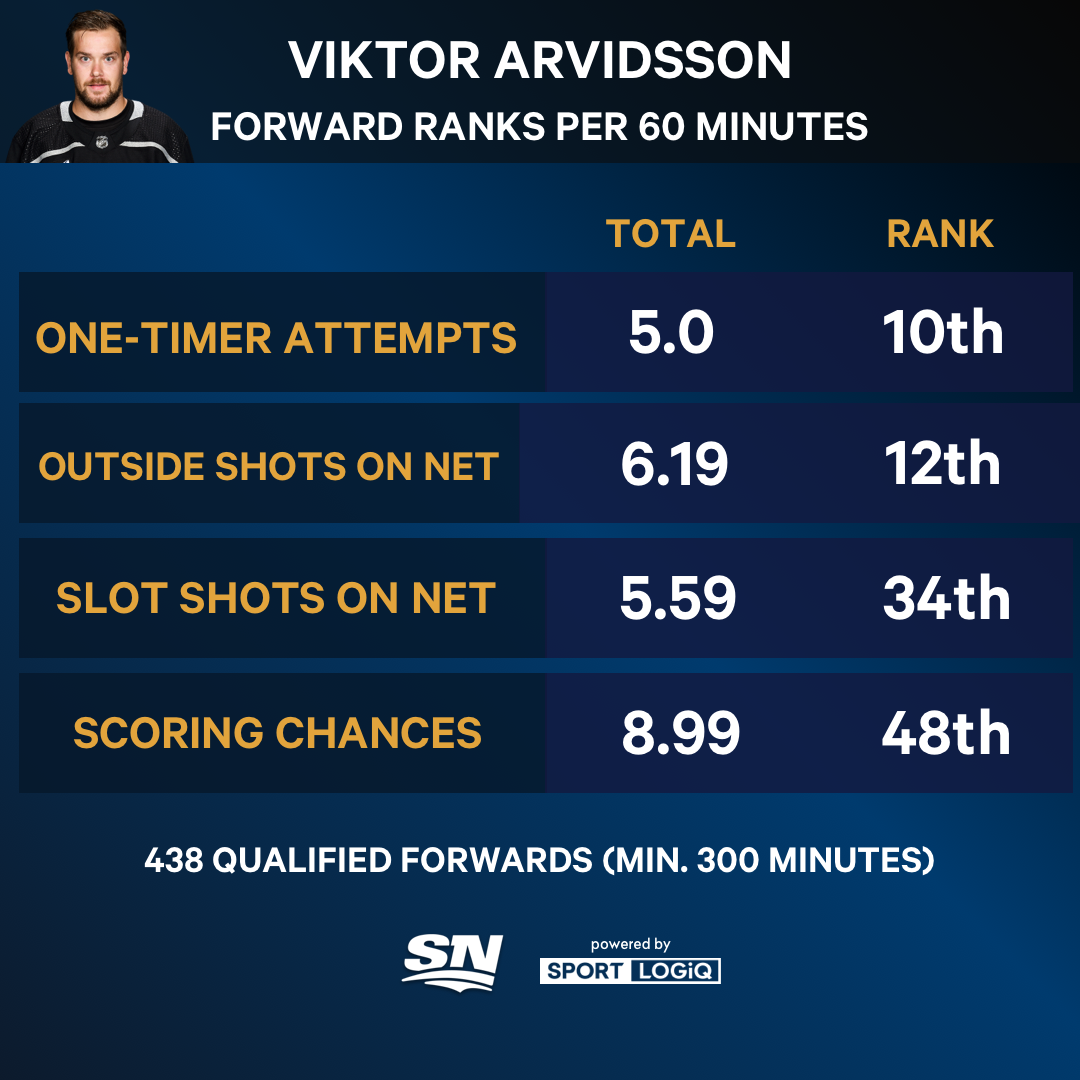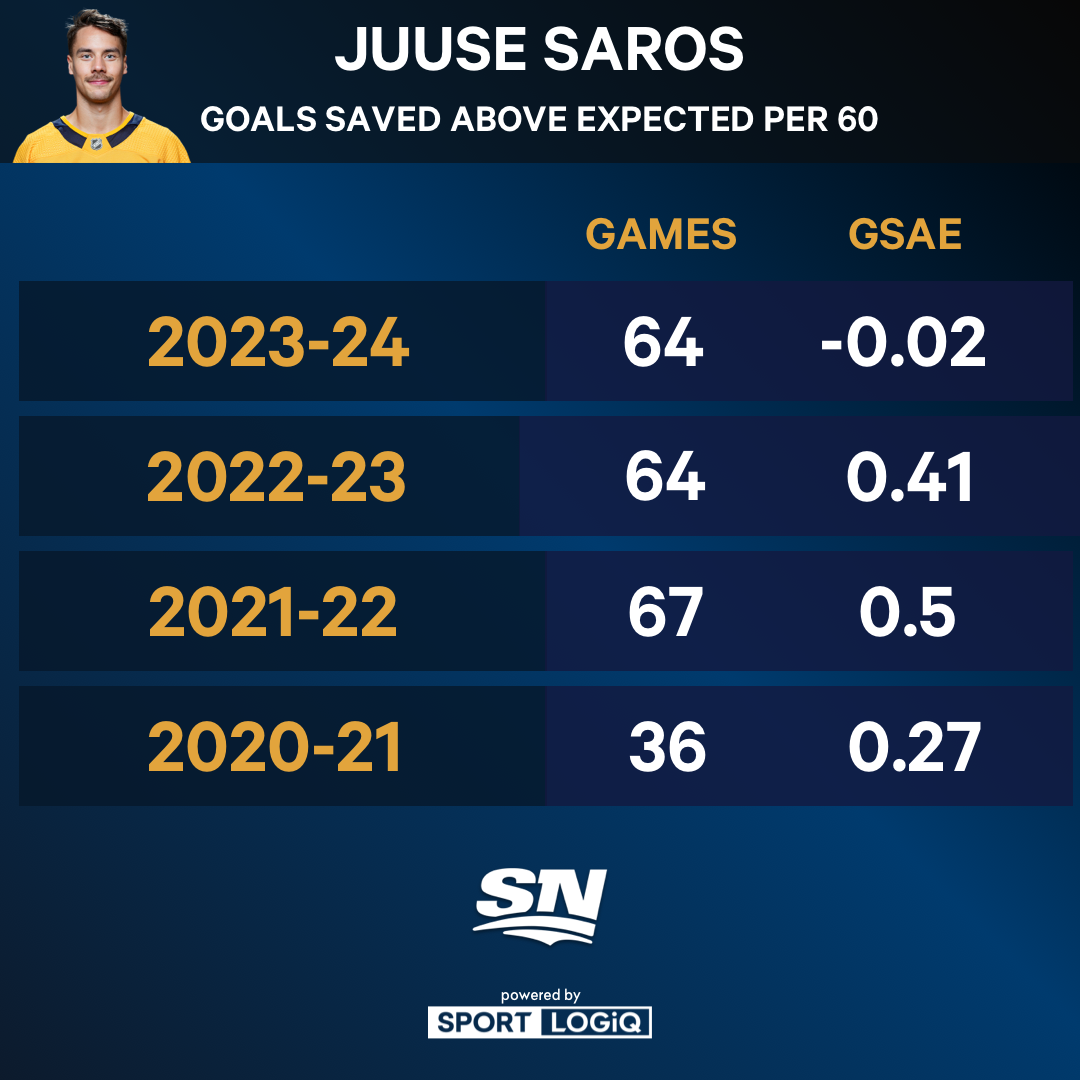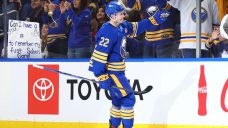Last week, we highlighted five NHL players poised for breakout seasons. Now we turn our attention to those looking to rebound from disappointing years.
Here are five players who surely will be motivated during the 2024-25 season:
Viktor Arvidsson, Edmonton Oilers forward
Arvidsson was absent for most of last season, appearing in only 18 games for the Los Angeles Kings because of injuries. But in those games, Arvidsson was one of the team’s top performers with 15 points (0.83 per game).
The play-driving winger registered 19 shot attempts per 60 minutes last season, which ranked 31st among 438 forwards who played at least 300 minutes in all situations. He has a well-rounded arsenal, allowing him to score from all over the offensive zone. When Arvidsson netted 26 goals in 77 games two seasons ago, 15 came from within the slot. Nine of the 26 were one-timers.

It is easy to imagine a healthy Arvidsson, who has scored at least 20 goals five times in his career, returning to form on Leon Draisaitl’s wing. At $4 million per season through 2026, Arvidsson could end up being one of the best bargains in the league.
Timo Meier, New Jersey Devils forward
Meier’s final numbers last season — 28 goals and 52 points in 69 games — were inflated by a late scoring binge. He recorded half of his point total (17 goals and 26 points) over the Devils’ final 23 games.
New Jersey hopes it is a sign of things to come for Meier, who is the team’s highest-paid forward at $8.8 million per year. (Meier scored on 12 per cent of his shot attempts over his final 23 games, compared to 4.4 per cent through his first 46 games.)
New coach Sheldon Keefe could roll out a top line of Meier, Jack Hughes and Jesper Bratt, who played together for a total of 6:58 at even strength last season. Their collective speed would give opponents fits; Hughes and Bratt ranked first and 12th, respectively, in rush scoring chances per 60 among 245 qualified forwards (minimum 1,000 minutes played). Meier was 49th, but he should climb that list if he plays with Hughes and Bratt.
Juuse Saros, Nashville Predators goaltender
Saros finished fifth in 2023-24 Vezina Trophy voting despite having his worst season as a starter, posting a 2.86 goals-against average and .906 save percentage in 64 games. It was an uncharacteristic performance from Saros, who recorded a .920 save percentage between 2020 and 2023.
The recipient of a new eight-year contract ($7.74 million cap hit) over the summer, Saros allowed 0.02 goals above expected per 60 last season — 26th out of 36 goaltenders who played at least 2,000 minutes. That might not seem like much; it translates to just an extra 1.29 goals allowed. But the year before, Saros saved a league-leading 25.9 goals above expected, or 0.41 per 60, over the same number of games.
Saros’ struggles were not a product of poor play in front of him. The Predators improved defensively in 2023-24, ranking 11th in expected goals against per 60 following a 25th-place finish the previous season.

Predators general manager Barry Trotz maxed out his credit card on July 1, spending a combined $108.5 million on Steven Stamkos, Jonathan Marchessault and Brady Skjei. Nashville’s success this season, however, largely hinges on a bounce-back performance from its star goaltender.
Mikhail Sergachev, Utah Hockey Club defenceman
Over seven seasons in Tampa Bay, Sergachev blossomed into a do-it-all defenceman for the Lightning. But as long as Victor Hedman patrolled the Bolts’ blue line, Sergachev would skate in his shadow.
That will not be the case in Utah, where Sergachev is expected to take on the No. 1 role after being traded there in June. (Sergachev missed 48 of the Lightning’s final 49 regular-season games with various injuries, including a broken leg.)
Sergachev had the puck on his stick for 5:01 per 60, ranking 29th out of 225 defencemen who played a minimum of 500 minutes. He made the right play more often than not. Considering how much Sergachev handled the puck, his 12.9 per cent turnover rate was respectable (57th).
Two seasons ago, Sergachev was one of five NHL defencemen who averaged at least 19 minutes at even strength, two minutes on the power play and two minutes on the penalty kill per game. Utah acquired him to handle that type of workload.
“He’s certainly going to get an opportunity to do that,” Utah GM Bill Armstrong told reporters. “I think that’s what he wants.”
Reilly Smith, New York Rangers forward
After a pit stop in Pittsburgh, Smith gets a fresh start in New York. Smith’s lone season with the Penguins was forgettable; he scored seven goals over his final 66 games and 13 total.
The Rangers are giving Smith a prime spot in their lineup, placing him alongside Chris Kreider and Mika Zibanejad. (New York rotated through several top-line right wingers last season, including Blake Wheeler, Kaapo Kakko and Jack Roslovic.)

Smith has a knack for getting to high-danger scoring areas, averaging 5.94 pass receptions in the slot per 60 at 5-on-5 — 24th among 375 qualified forwards (minimum 500 minutes played at 5-on-5). His 2.76 inner slot shots on net per 60 were 31st.
In all situations, Smith scored 6.6 fewer goals than expected last season, making him one of the league’s unluckiest forwards. There should be no shortage of offensive opportunities for Smith if he sticks with Kreider and Zibanejad. New York outscored opponents 45-33 when they were on the ice at 5-on-5 last regular season.





























COMMENTS
When submitting content, please abide by our submission guidelines, and avoid posting profanity, personal attacks or harassment. Should you violate our submissions guidelines, we reserve the right to remove your comments and block your account. Sportsnet reserves the right to close a story’s comment section at any time.